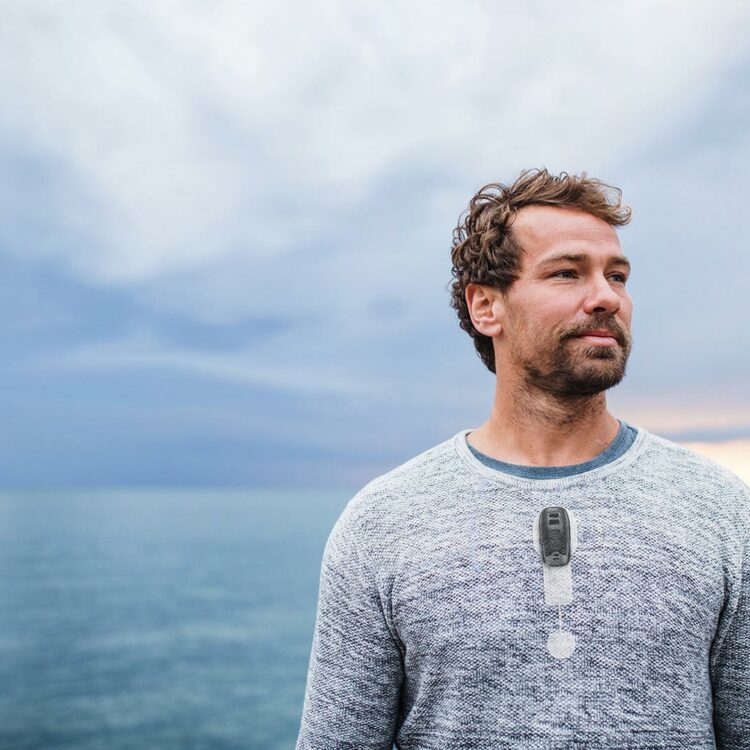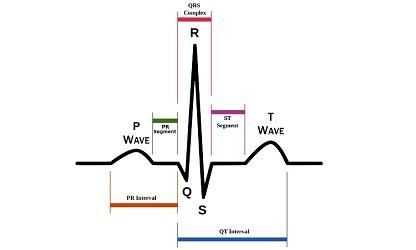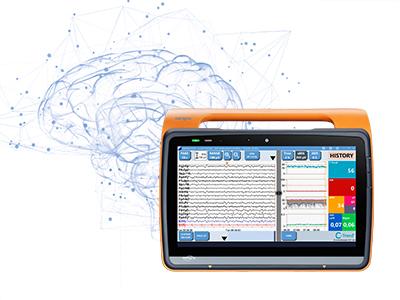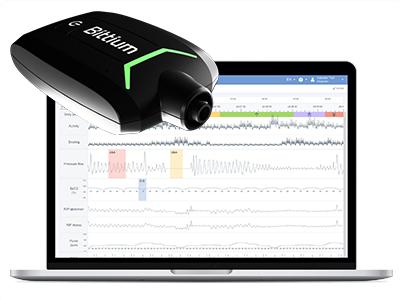Biosignal Monitoring and Analysis

Biosignal Monitoring and Analysis
Our expertise and know-how in biosignal monitoring started over thirty years ago, and the result is our current range of high-signal-processing quality offerings with comprehensive end-to-end solutions. Decades of honing our expertise in biosignal monitoring and processing have earned us a reputation as one of the most highly trusted providers of specialized tools for medical professionals.
We have learned over the years that success in the industry requires understanding the medical service provider business and industry-specific needs -a reason why our solutions support long-term measurements to achieve maximum diagnostic yield. This service provider (IDTF) segment and ambulatory outpatient measurements are managed by hospitals and clinics. We have successfully delivered turnkey solutions in globally regulated environments, and partnering with us is the right step to increasing the efficiency of your medical service business and everyday clinical work.
Biosignals convey information about the physiological phenomena in the body. Efficient recording and processing of biosignals are crucial in the diagnosis, treatment, and research of, e.g., cardiovascular and neurological diseases. Biosignals originate from cells that have electrical properties. When the cells are activated, their voltages change over time. When many cells are activated at the same time, their activity can be recorded non-invasively on the surface of the skin by measuring the voltage between surface electrodes.
Biosignals are very weak, typically in the range of micro or millivolts, and require efficient amplification. After the amplification, the signals are filtered and digitized via an analog-to-digital converter. Measured biosignals are usually contaminated with noise or blurred due to the skin and other tissues between the signal origin and the measuring electrodes. Efficient signal processing and proper measuring techniques can reduce interferences.

Turnkey Solutions with Excellent Diagnostic Yield in Global Regulated Environments
Bittium Expertise in Biosignals
Bittium entered the biosignals market with electromyography (EMG) devices, which measure the electrical activity of the muscles. Since then, Bittium has expanded its portfolio to electroencephalography (EEG), electrocardiography (ECG), and home sleep apnea testing. EEG and ECG measure the electrical activity of the brain and heart, respectively. Even though these signals have a similar background in the electrical properties of the cells, they are measured and analyzed with different methods.
ECG
ECG measures the activity of the heart. When the heart muscles contract in a normal way, they generate an ECG signal with a typical pattern. Deviations from the typical ECG pattern may indicate an improper function of the heart. With Bittium Faros, long-term ECG can be measured easily, and analyzing the data with Bittum Cardiac Navigator software aids in the detection of abnormal heart function.


EEG
The brain signals can be measured with EEG devices, which record the electric potentials of thousands of cortical neurons that are active at the same time. Usually, several surface electrodes are attached to the scalp to locate the activity in a specific brain area. EEG signals can be analyzed in several different ways to investigate brain function. EEG aids in the diagnosis of, e.g., epilepsy and sleep disorders. Bittium has EEG systems for cutting-edge research as well as an easy-to-use system for ambulatory EEG recordings.
Home Sleep Apnea Screening
Home sleep apnea testing includes several sensors, connected to the skin, to pick up relevant biosignals, such as airflow, oxygen saturation, and the movement of the abdomen. Based on these signals, typical sleep-related breathing disorders can be diagnosed. For example, the severity of obstructive sleep apnea can be quantified by determining the number of apneas (cessations of breathing) and hypopneas (decreased breathing) during sleep. Bittium Respiro is a modern sleep apnea screening device and analysis service solution for service providers, hospitals, clinics, and health centers.

End-to-End Solutions
Bittium´s biosignal systems have the capability for wireless data transfer and remote monitoring. Moreover, the data can be securely transferred to a server and stored there for later analysis.
Bittium experts adapt to the specific needs of your solution, matching the right expertise for your needs and discovering together connected products and services that serve clinical users and environments. Thanks to the collaboration with other Bittium product and service areas, our specialists now bring you combined comprehensive experience from secure end-to-end solutions development that considers patient security and secure remote access.
We are a certified (ISO 9001 and ISO 13485) medical technology provider of high-end biosignal measuring devices and easy analytical tools for cardiology, neuroscience and neurophysiology that meets the European Union medical CE requirements. Our Faros series is CE class IIa, FDA 510 (k) approved. Respiro device and Respiro Analyst are CE-certified, CE 0537 (Class IIa).
Cutting-edge Technologies for ECG and EEG Monitoring as well as Sleep Apnea Screening
Selected Publications
Cardiology
Driver Drowsiness Detection Systems: Potential of Smart Wearable Devices to Improve Vehicle Safety. Thomas Kundinger, 2021.
Early postnatal heart rate variability in healthy newborn infants. Vania Oliveira et al. Frontiers in Physiology, 2019.
Applicability of a textile ECG-belt for unattended sleep apnoea monitoring in a home setting.
Piero Fontana et al. Sensors, 2019.
Continuous 4 week ECG monitoring with adhesive electrodes reveals AF in patients with recent embolic stroke of undetermined source. Tuomas J. Lumikari et al. Annals of Noninvasive Electrocardiology, 2019.
Prevention of adverse drug effects, in particular torsade de pointes-events, by pharmacy-based basic data collection. Thomas Bodmer et al. 25th Annual Meeting of the German Drug Utilisation Research Group (GAA), 2018.
Cardiac sympathetic index identifies patients with Parkinson’s disease and REM behavior disorder. Maria Salsone et al. Parkinsonism & Related Disorders, 2016.
Neuroscience and Neurophysiology
Brain state-dependent brain stimulation with real-time electroencephalography-triggered transcranial magnetic stimulation. Maria-Ioanna Stefanou et al. Journal of Visualized Experiments, 2019.
Synchronizing the transcranial magnetic pulse with electroencephalographic recordings effectively reduces inter-trial variability of the pulse artefact. Leo Tomasevic et al. PLoS ONE, 2017.
Prefrontal Theta-Phase Synchronized Brain Stimulation With Real-Time EEG-Triggered TMS P. C. Gordon, S.Dörre, P. Belardinelli, M. Stenroos, B. Zrenner, U. Ziemann and C. Zrenner Front. Hum. Neurosci. 15:691821
Sleep-dependent upscaled excitability and saturated neuroplasticity in the human brain: From brain physiology to cognition M. A. Salehinejad, E. Ghanavati, J. Reinders, J. G. Hengstler, M.-F. Kuo, M. A. Nitsche bioRxiv 2021.04.28.441823; doi:
Voluntary motor commands are preferentially released during restricted sensorimotor beta rhythm phases S. J. Hussain, M. K. Vollmer, I. Iturrate, R. Quentin bioRxiv 776393; doi:
A set of electroencephalographic (EEG) data recorded during amplitude-modulated transcranial alternating current stimulation (AM-tACS) targeting 10-Hz steady-state visually evoked potentials (SSVEP) D. Haslacher, K. Nasr, S. E. Robinson, C. Braun, S. R. Soekadar Data in Brief 36 (2021) 107011
Decreased intersubject synchrony in dynamic valence ratings of sad movie contents in dysphoric individuals X. Li, Y. Zhu, E. Vuoriainen, C. Ye, P. Astikainen Scientific Reports (2021) 11:14419
Cardiac Activity Impacts Cortical Motor Excitability E. Al, T. Stephani, M. Engelhardt, A. Villringer, V. Nikulin Research Square 2021
Phase-dependent offline enhancement of human motor memory S. J. Hussain, M. K. Vollmer, J. Stimely, G. Norato, C. Zrenner, U. Ziemann, E. R. Buch, L. G. Cohen BrainStimulation 14(4) 2021